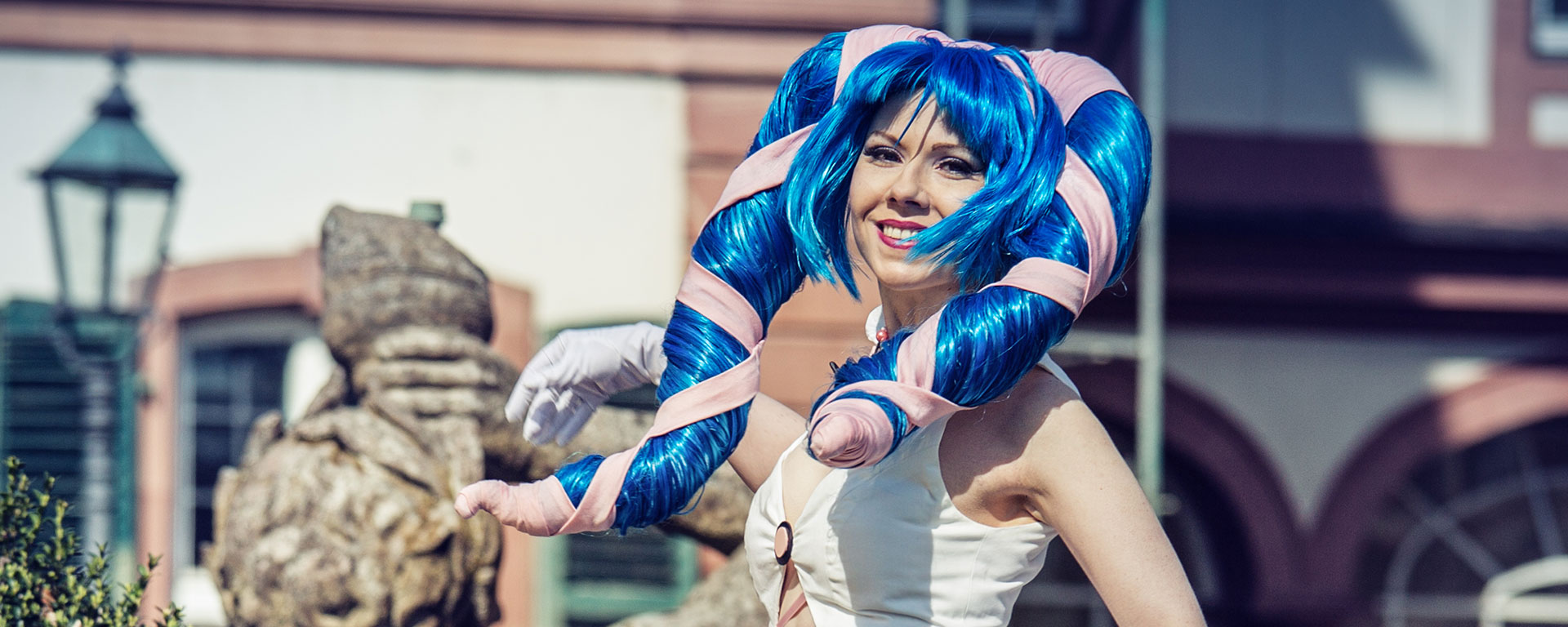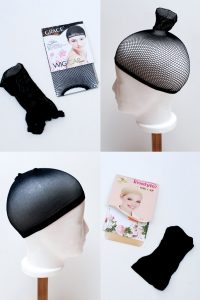If you love crazy cosplay wigs as much as I do, you know that styling them is one thing – but wearing them can be a whole new challenge!
Long wigs, heavily styled wigs, back-heavy ponytail wigs – many cosplayers find them uncomfortable, or even painful to wear. This doesn’t have to be the case though! Here’s a few simple tricks how to put on big wigs, how to secure them, and how to make your time in costume more enjoyable.
Wear a wig cap
The first accessory you’ll need is a wig cap that fits your head comfortably. It should keep your natural hair in check and not ride up. I have a preference for fishnet wig caps, as I find it easier to poke hairpins through the mesh. As you’ll see, a proper foundation is key for heavy wigs.
A velcro wig band or silicone wig grip can be worn over the wig cap, or it can replace the cap – this is especially useful when you are wearing a lace-front wig and you can’t hide the edge of the wig cap under the lace. Many wig wearers swear by these headbands that add a layer of padding and also give heavy wigs more grip.
Create the foundation
In order to give your hairpins something to hold on to, your hair needs to be tucked neatly under the wig cap. Preferably in multiple flat buns or pincurls, or braided close to the scalp. If you’re struggling to put your hair under a wig, read this tutorial first.
Use hairspray and hair gel to slick back your hair and control fly-aways. Gel will create much-needed texture if you have particularly thin and slippery hair, or short hair that doesn’t hold hair clips well.
To prevent the wig cap from riding up, I like to fix it to my slicked-back hair with weave clips or bobby pins. This is especially helpful if your wig is going to see a lot of (stage) action, and you want to be absolutely sure that nothing moves under the wig.
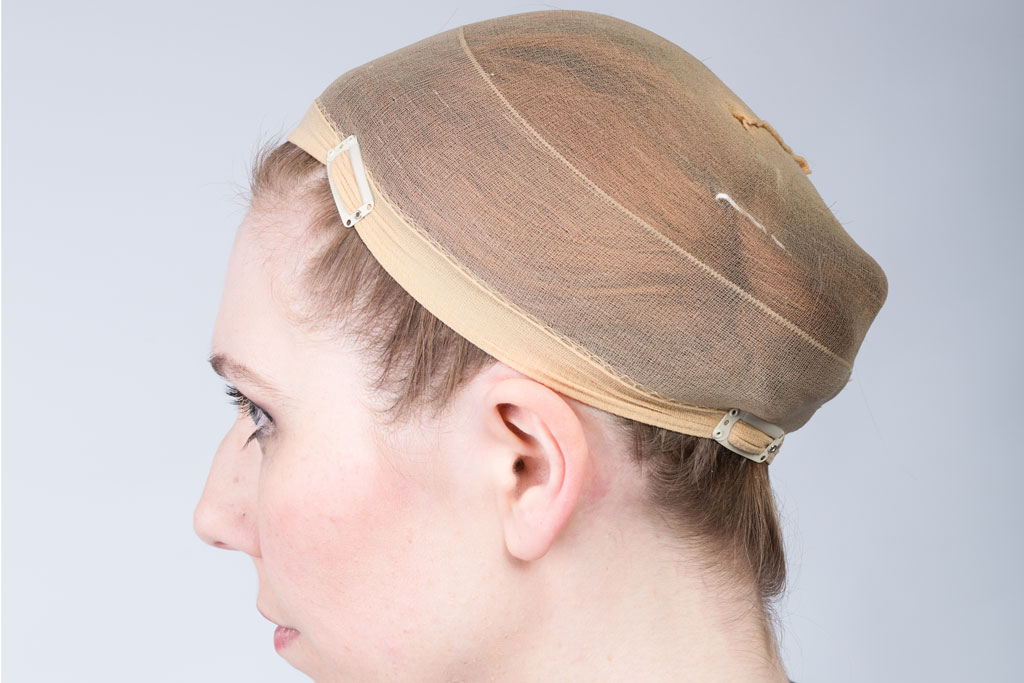
Put on the wig
A long or heavily styled wig should never be flipped over while you put it on. You don’t want to mess up your wig before you even step out of the room! Tie off long hair with ribbons and put it in a hair net to keep it out of your way. Put the wig on like a hat: hold it over your head and lower it slowly, starting at the front hairline.
A back-heavy wig can be challenging to put on because it will keep sliding off your head while you try and secure it with pins. Ask a friend to assist you by holding the wig in place while you put in the first pins. If it is a ponytail wig or an updo, your helper can grab it safely by the base of the ponytail. Otherwise just have them hold down the front hairline.
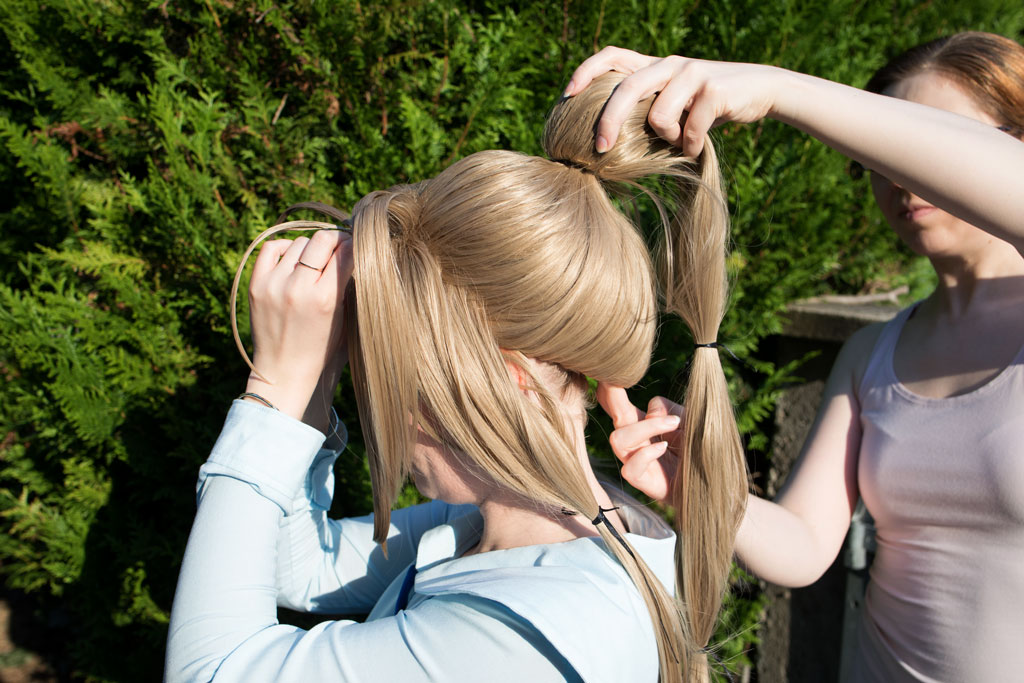
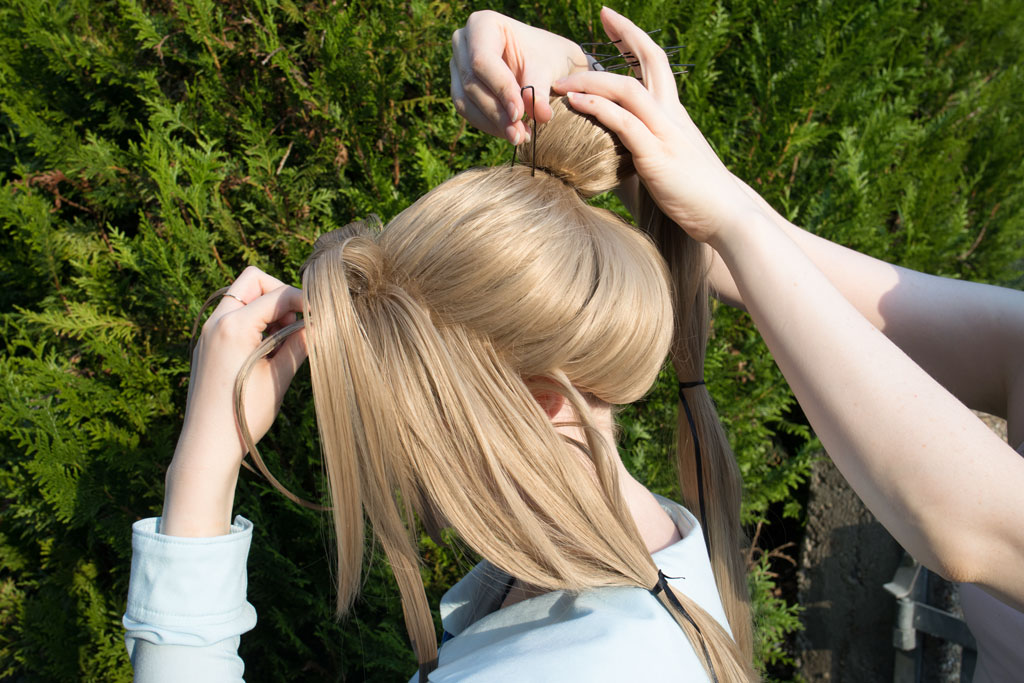
When you spend a whole day in costume, or when you perform on stage, you need to be sure that your wig will stay put. Don’t be afraid to nod and shake your head to test the fit. If you can already feel the wig slipping, or if you don’t feel secure enough: start over! You may think it’s going to be fine at the con if you’re just careful, but a wig that slips can no longer be saved by constantly tugging at it. That will just make things worse.
It’s better to spend more time in front of the mirror, so that you can enjoy the rest of your con day without worrying about your wig.
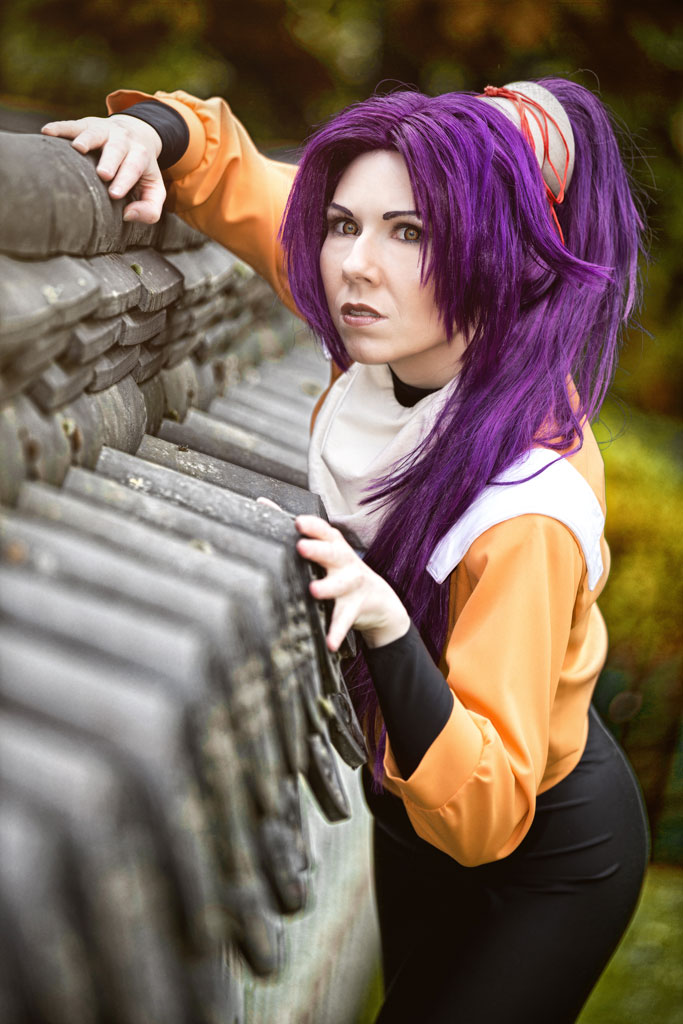
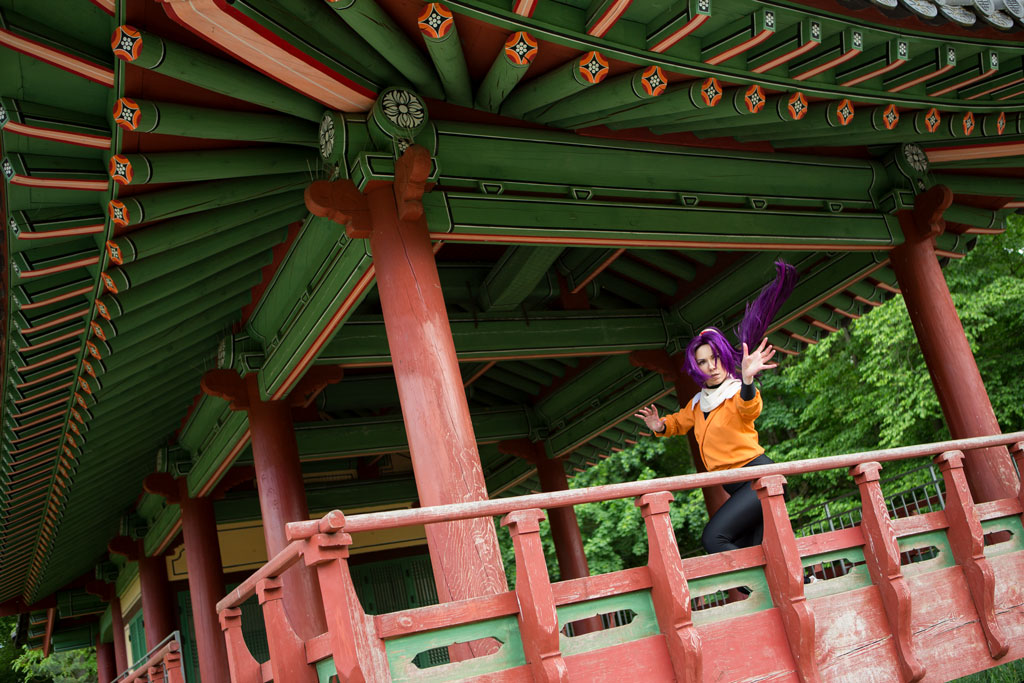
Use the right hairpins
To keep the wig on your head, you need hairpins – the U-shaped kind. Their holding power increases the more hair they hold (not the other way round, as with bobby pins), and they can be distributed all over the head – not just along the hairline.
My lifesaver: heavy-duty 3″ hairpins. These beasts are available at beauty supply stores and dance wear stores (Ari or Bunheads brand). I typically use bobby pins along the hairline (mostly in the back), and up to a dozen hairpins everywhere else. I put them in where my own hair is put up underneath the wig.
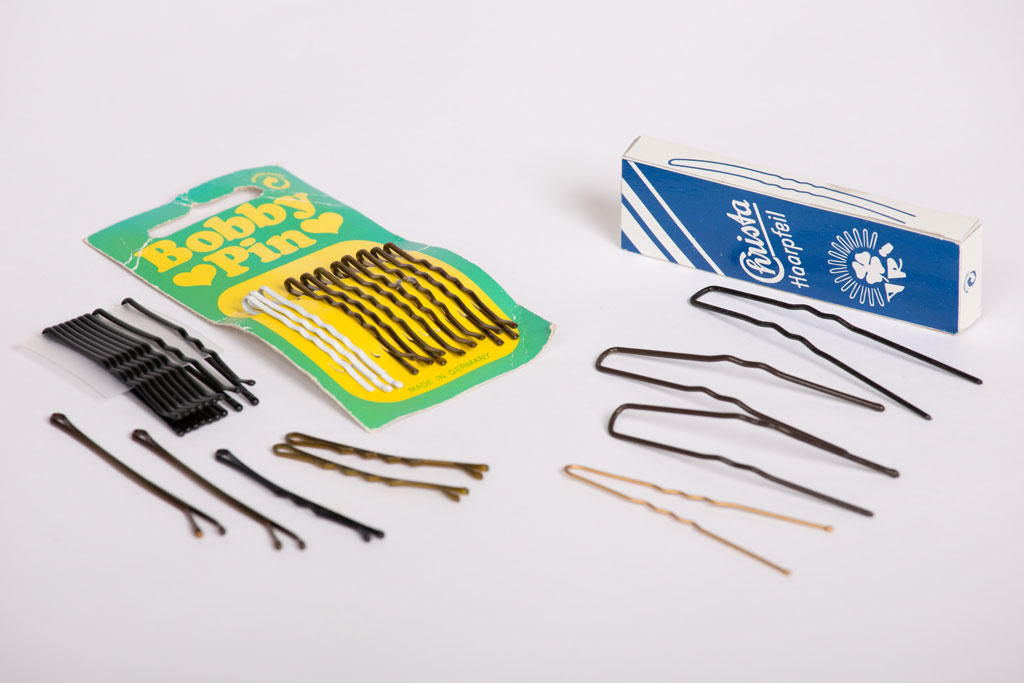
Beginners often struggle with how to use U-shaped hairpins (so did I!), so I made a video (link to my Facebook).
The trick is to stab them vertically through all the layers (wig, wig cap, own hair), dig in until the tips touch your skin, then flip the pin like a lever. Push it in all the way until the pin lies flat against your scalp.

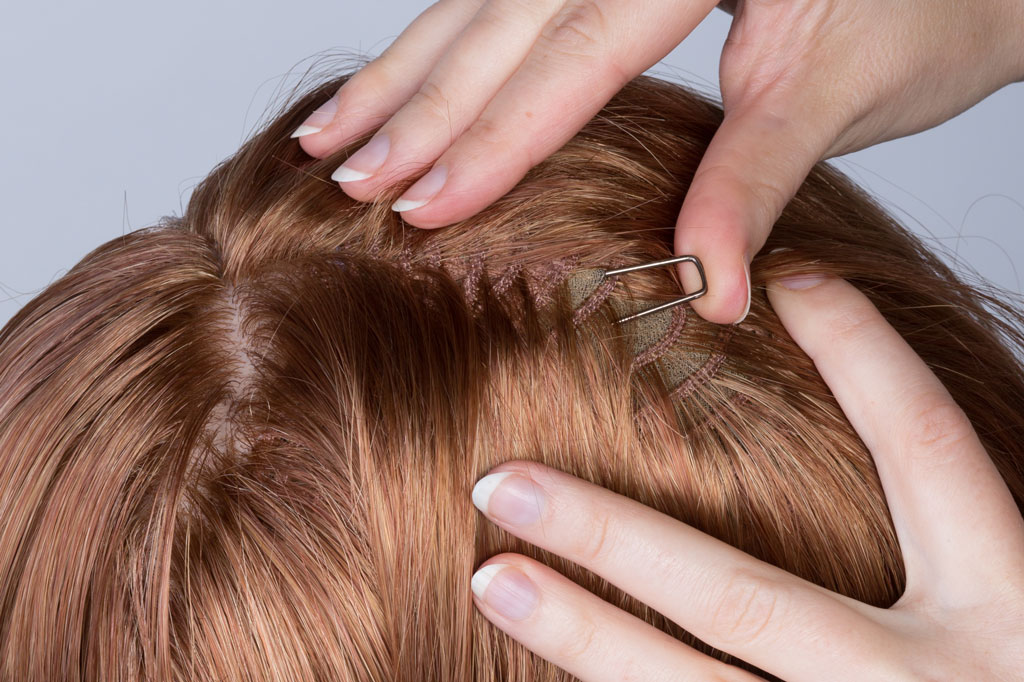
Pain relief
I often hear from people who find wearing a wig painful, and who are afraid of wearing heavy wigs. That is nothing to be ashamed of. However, you can often prevent or delay that headache if you follow these simple tricks!
When you secure your wig with pins or clips, they should never pull on your hair, especially not at the hairline. When using bobby pins on the perimeter of the wig, make sure that the pins grab only the wig and the wig cap, not your own baby hair.
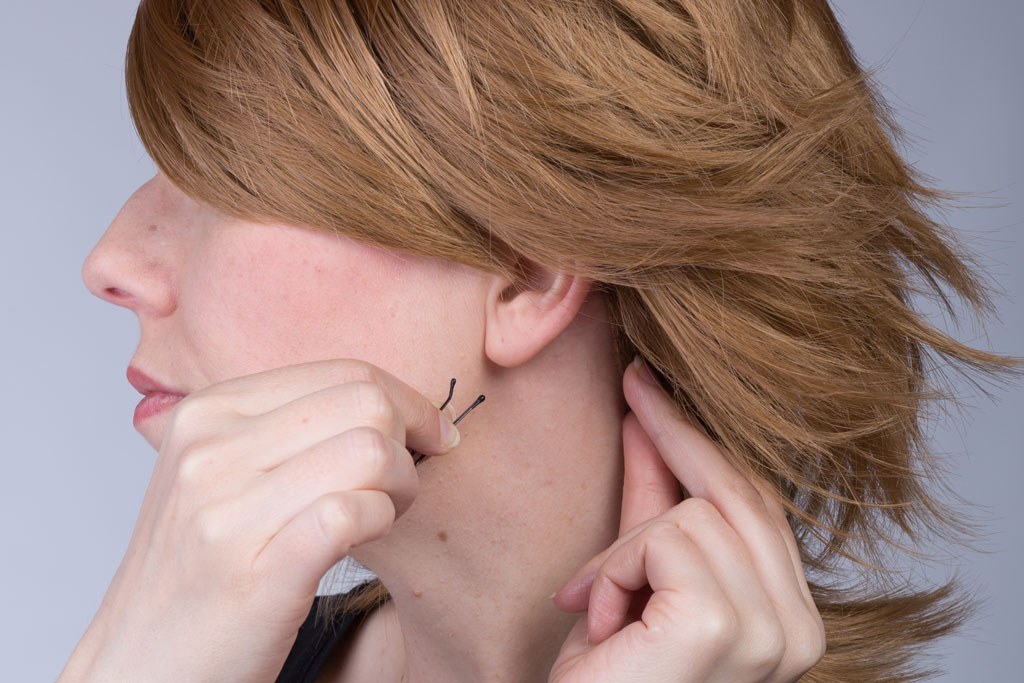
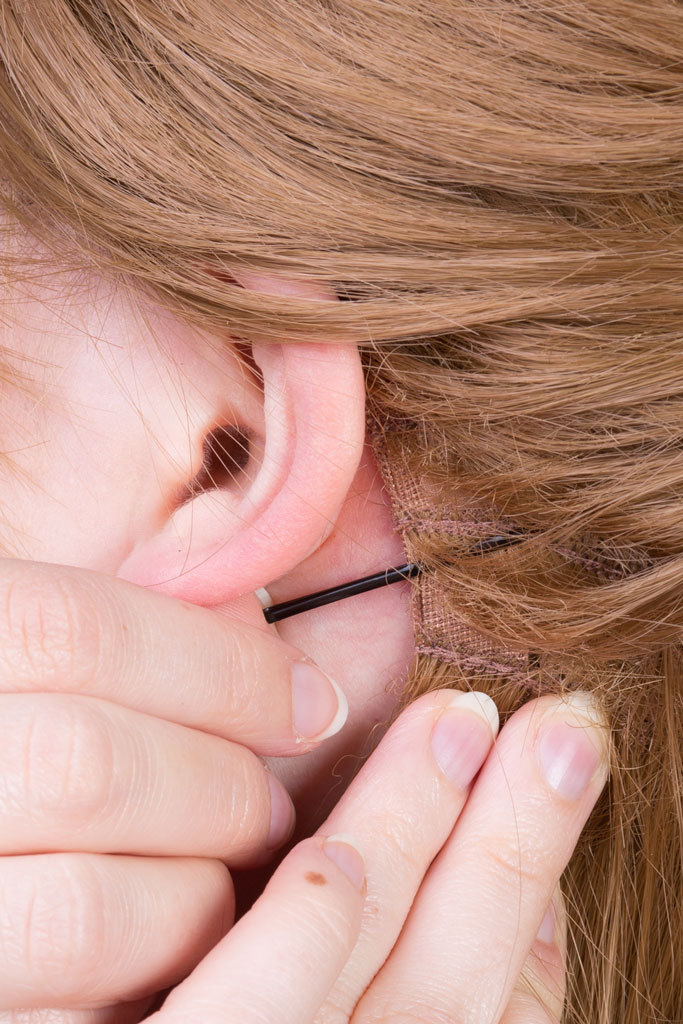
Remove and redo any pins that feel uncomfortable. Even a mild tugging sensation can grow into a massive headache later.
Do not try to replace hairpins or bobby pins with skin adhesive or spirit gum, either. It is fine for keeping a delicate lace front in place, but it is not meant to keep heavy wigs from slipping. The constant pull on your forehead could cause skin irritation.
Let your U-shaped hairpins do the heavy lifting! They’re designed for the job.
Take a break
Finally, as with any uncomfortable costume, accept that there is a limit to how long you can wear certain wigs without being in pain. When I wear heavy wigs, I plan a break after a few hours where I can take off the wig and rest my head and shoulders. Or I change out of costume, or put on a shorter wig that still matches the costume.
I have made it through looong cosplay contest days (8–10 hours) wearing heavy wigs, but never without a proper break!
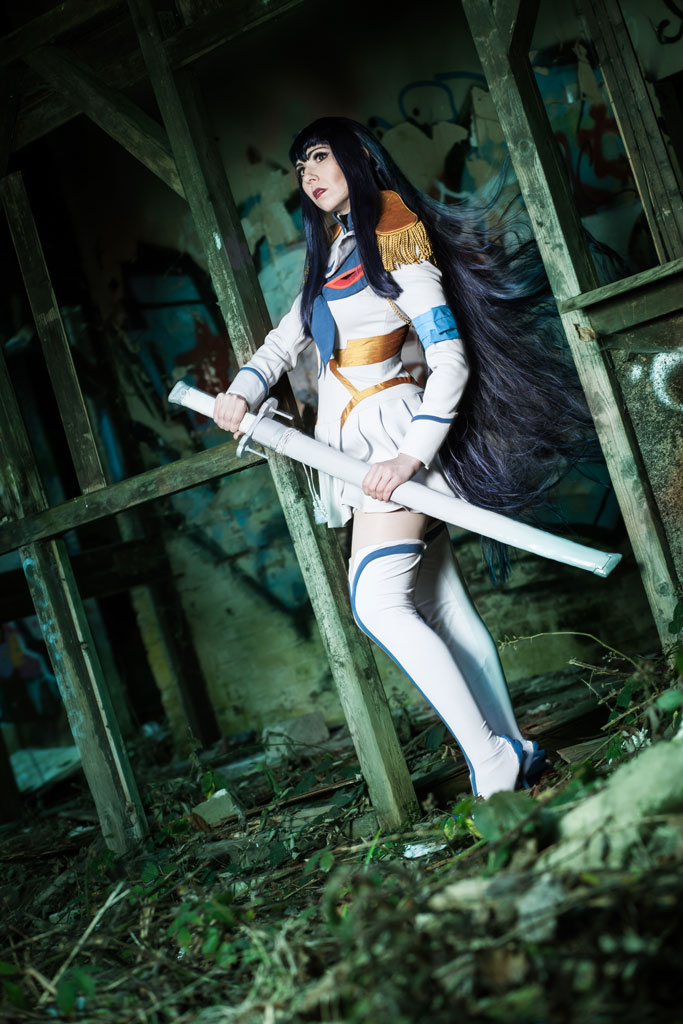
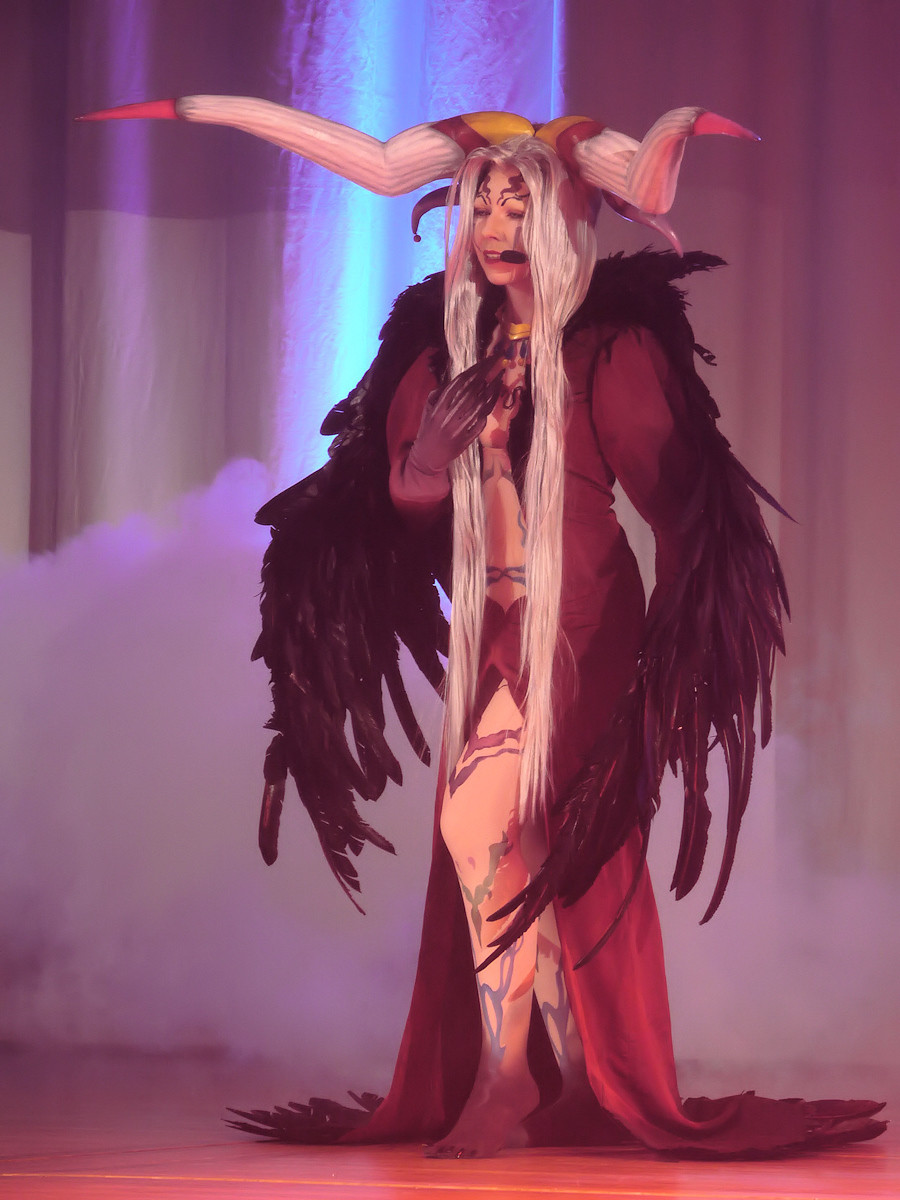
My Satsuki wig is 1.20m long and very heavy due to all the extra wefts that I added. The video game villainess Ultimecia sports giant horns that are supported by a metal understructure inside the wig. Those two wigs were literally a pain to wear!
Do you want to learn how I take care of my long wigs? Check out this detangling tutorial!
